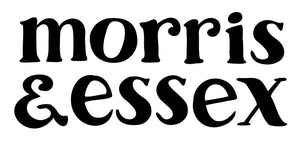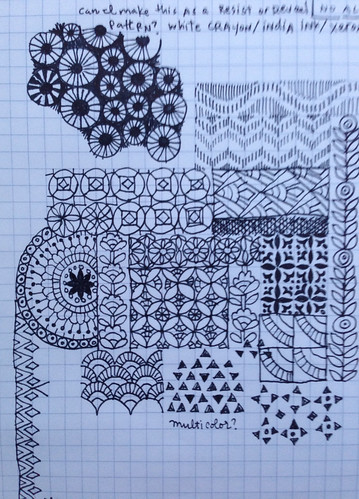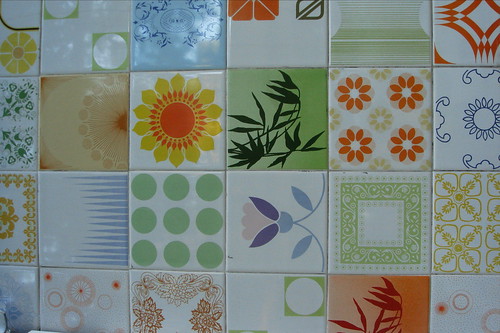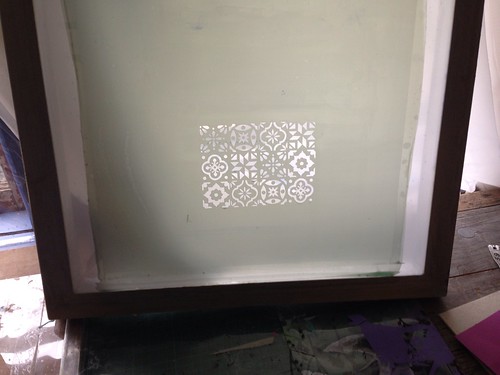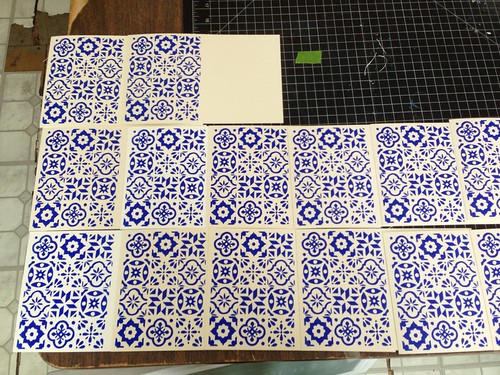
Blue & White Spanish Tile card design
This card is available for purchase now in my Etsy shop! and this design is also available as a textile print on a variety of beautiful fabrics, via spoonflower.com.
It's hard to say exactly where this card idea got started, because I can't even remember a time when I wasn't snapping photos of beautiful tile patterns and doodling them on all my sketchbook pages. Here are just a few of many examples:
I started sketching this card design on the computer, as a simple pattern of repeating tiles, and then I tried a few different variations on the theme, with different tile patterns, trying to choose my favorite and wishing I could make 10 cards so I could use them all...
And then I remembered seeing these tiles on a storefront in Buenos Aires, years ago. I loved the mix of so many different tile patterns used together, loved it so much that I snapped a photo.
Which gave me the idea to just go ahead and use a little bit of everything together in one design. Kind of a "wow!" moment!
Once I figured out my final design, I printed it out and used Rubylith to make the film. I could just print directly from the computer onto film, but I love Rubylith and I think the process of cutting the pattern by hand is fun and gives the finished product a more human, handmade feeling that's missing if I just print the film directly from the computer. There are always little irregularities that come from making hand-cut film.
Rubylith is cool stuff. It's a translucent, ruby-red film that comes in big sheets or rolls. It's actually a two-layer film, the thicker layer is just clear acetate and thinner layer is the red color. Because it's translucent, you can lay it over a sketch and trace it quickly and easily. I use a fine x-acto blade to carefully cut through the red layer, leaving the thicker film intact. Then peel away the red film from some areas, leaving your final image in red, with a clear background. When I expose my screen using this film, the red film will block the light, preventing those areas from being exposed. Silkscreening uses a film positive (unlike photography, which uses a film negative) so the areas that are left in red are the areas that will be printed on the final product.
Rubylith is marvelous for its crisp, sharp edges and ability to handle teeny-tiny details. A textile design teacher told me that (before computers) rubylith used to be the standard for tie pattern designers, because tie patterns are so insanely fine and detailed and rubylith is perfect for those details. All this meticulous slicing and peeling is a fussy job and I'm sure most people wouldn't enjoy it but I find it meditative and relaxing and just the kind of obsessive task that I love. And a little mistake is easy to fix with a bit of scotch tape. After an hour of cutting my worktable is littered with all the pretty little red snippets that I've peeled away.
And then the design is done! I use this film positive to expose a silkscreen that I've coated with light-sensitive emulsion in my darkroom. (You can learn a bit more about the silkscreen process in another post, here.) I usually silkscreen on fabric so I have to use different screens, with a finer mesh fabric, to print on paper. I printed a small batch of about 50 of these cards for the first run, but I think I'll be printing lots more of these in the future.
